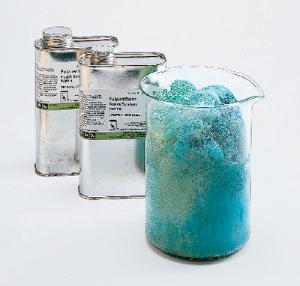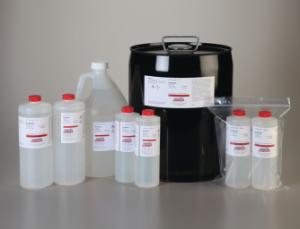Styrofoam Cups Vanish Into Thin Air with this Activity
Middle School/High School
What's the difference between the demise of Frosty the Snowman, and the Wicked Witch of the West? The guy wearing the top hat definitely melted away while the crone wearing the pointy hat more likely dissolved away.*
Say what!
Yes, despite the famous exclamation, "I'm melting… I'm melting…" the book describes the witch melting away "like brown sugar." And we all know, sugar doesn't melt in water, it dissolves. Frosty, on the other hand, wound up a puddle of water on the greenhouse floor (don't be sad, he was still the same chemical compound he always was).
Grab this Styrofoam-meets-acetone activity, so the science investigators in your class can make observations about the concept of dissolving and how to distinguish it from melting.
Properties of Styrofoam
Styrofoam is actually a trade name used generically to describe expanded polystyrene foam (EPS), a polymer made of a long chain of molecules. It is injected with gases during the manufacturing process and becomes extremely lightweight, with about 95 percent air. We use Styrofoam to make drinking cups and insulating materials, as it is a poor conductor of heat and is insoluble in water. Styrofoam is a non-polar molecule – the electrons are pretty equally shared among the bonds in the molecule. It is moderately soluble in many organic solvents, cyanoacrylate, and the propellants and solvents of spray paint.
Ironically, while the experiment gives the appearance that EPS can break down within seconds, estimates for the breakdown of it in the environment range from 500 to 1 million years. That's why scientists continue to search for efficient ways to recycle it.
Properties of acetone
Most people know acetone only as a nail polish remover (fun fact: acetone does a better job of prepping the nail for a new coat of paint, and the polish will stay on longer).
Acetone is a common building block in organic chemistry. It is an organic compound with the formula (CH3)2CO. A colorless, flammable solvent, it mixes easily with water and evaporates quickly in the air, and is the simplest example of the ketones. Like Styrofoam, acetone is a non-polar molecule. It is an important solvent, often used to clean things in the laboratory. Acetone is popular in plastics manufacturing, industrial cleaning products, and paint thinners.
How the vanishing act works
When the Styrofoam dissolves in acetone, the air in the foam is released. That's when the cup seems to disappear. Dissolving polystyrene foam product in acetone is a jaw-dropping demonstration of the solubility of this plastic in an organic solvent.
Since Styrofoam is mostly air, your students may be surprised by how much foam appears to dissolve in the acetone—like magic! In fact, all it takes is a single cup of acetone to dissolve an entire bean bag full of Styrofoam beads.
Add this activity to your lesson plan; it's a fascinating way to demonstrate the way different materials are put together, act under different conditions, and go through changes. Your students will understand the true meaning behind the adage, "like dissolves like."
*Disclaimer: We fully accept and agree that exclaiming, "I'm dissolving, I'm dissolving!" would have nowhere near the powerful literary impact as "I'm melting, I'm melting!"
Recommended Products:
[StartProductBlock]

Ward's® Chemistry Polyurethane Foam Demonstration
Expand student knowledge of polymers. Ideal for illustrating foam and polymer production, as well as the use of catalysts in reactions, this dramatic demonstration will cause foam to grow 30 times the original volume of the reactants - a polyether polyol and a polyfunctional isocyanate.
[EndProductBlock]
[StartProductBlock]

Acetone
This product is designed for educational and teaching laboratories, and no certificate of analysis is available. Synonyms: 2-Propanone, Dimethyl Ketone, Solvent.
[EndProductBlock]
